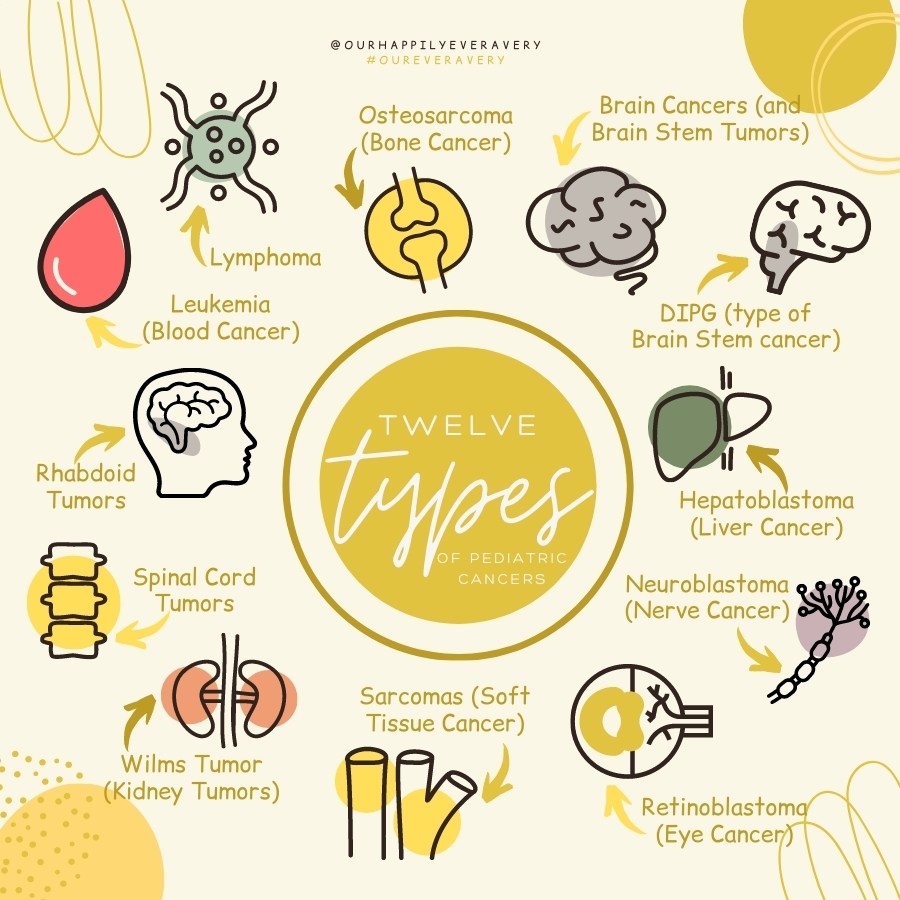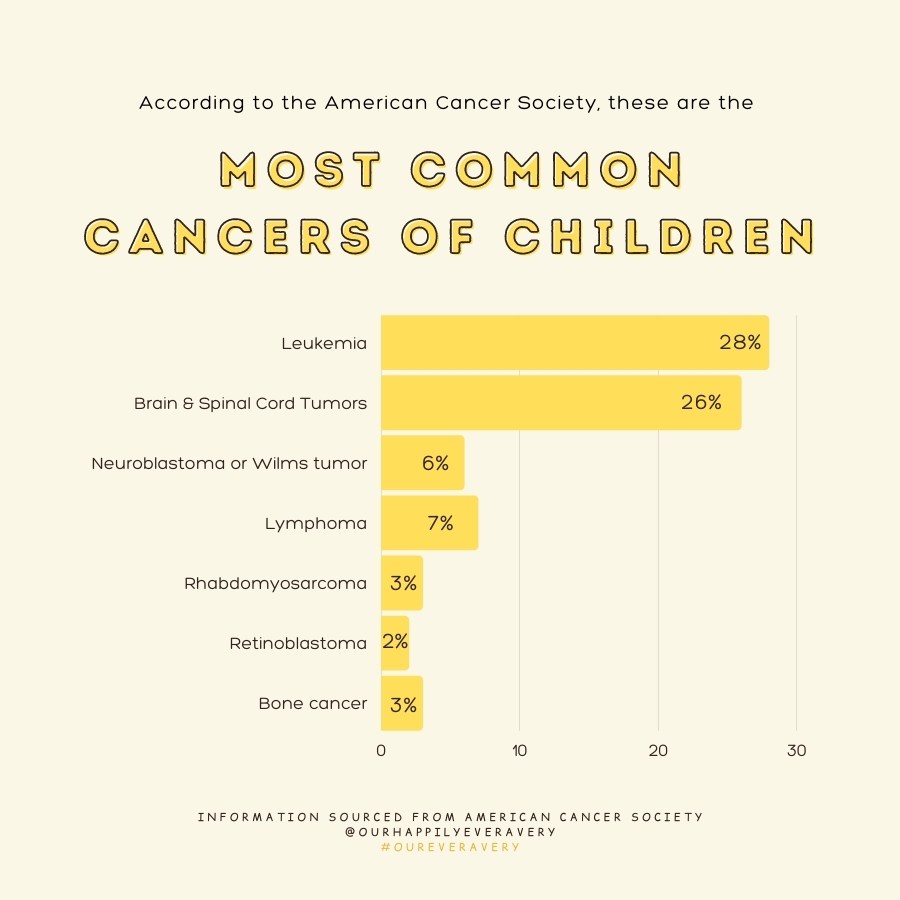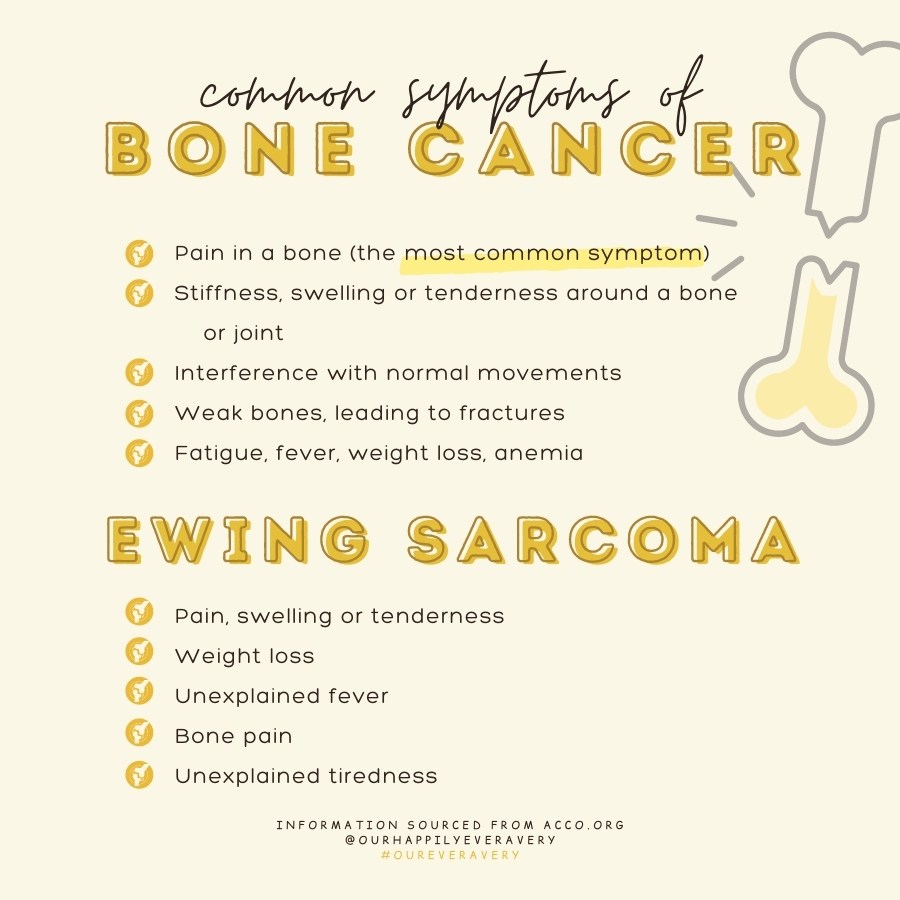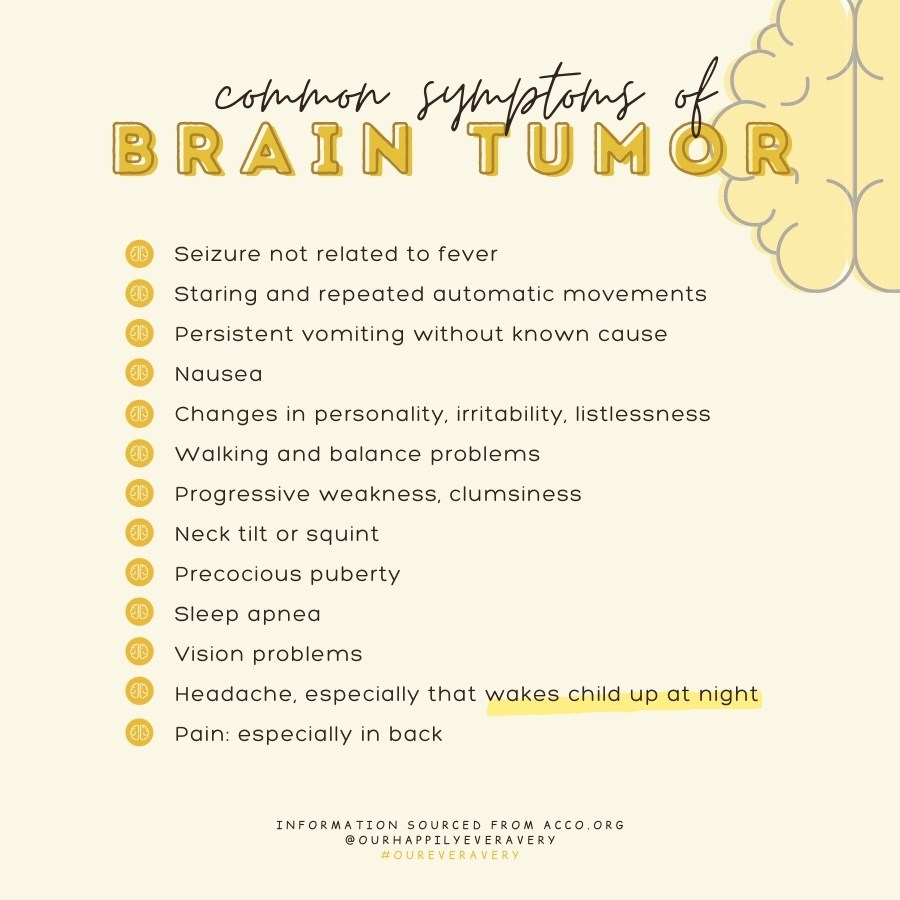Globally, there will be an estimated 13.7 MILLION new cases of childhood cancer between 2020 and 2050.
Unlike many adult cancers, childhood cancers are not linked to lifestyle factors, which rules out proactive measures to prevent cancer cell development in children.
Some forms of cancer only affect children under a certain age, but even in cases when a child develops a type of cancer that adults can also suffer from, different treatment protocols are necessary—simply lowering the dose of an adult treatment is not an appropriate or effective option.
“Childhood cancer” is a general term to describe more than 12 types (and countless subtypes) of cancer found in children.
Each type/subtype of childhood cancer requires a unique, specialized course of treatment, which makes finding a cure for every child extremely challenging and highlights the crucial importance of additional childhood cancer research.
- Bone Cancer (including Osteosarcoma and Ewing’s sarcoma)
- Brain (and Brain Stem Tumors)
- Hepatoblastoma (Liver Cancer)
- Leukemia (Blood Cancer)
- Lymphoma (including both Hodgkin and non-Hodgkin)
- Neuroblastoma (Nerve Cancer)
- Retinoblastoma (Eye Cancer)
- Rhabdoid Tumors
- Sarcomas (Soft Tissue Cancer, including Rhabdomyosarcoma)
- Spinal Cord Tumors
- Wilms Tumor (Kidney Tumors)
The types of cancers that occur most often in children are different from those seen in adults.
Cancers that start in the bones (primary bone cancers) occur most often in older children and teens, but they can develop at any age. They account for about 3% of childhood cancers.
Osteosarcoma and Ewing’s sarcoma are the most common malignancies of bone tissues in children. Osteosarcoma, the more common of the two types, usually presents in bones around the knee. Ewing’s sarcoma may affect bones of the pelvis, thigh, upper arm, or ribs.
Brain cancers account for about 15% of pediatric cancers and are the second most common type of cancer in children.
Treatment of pediatric brain cancers (and non-malignant brain tumors) is more complex than is the treatment of some of the other childhood cancers.
Surgery to remove the tumor is not always possible, either because the tumor is inaccessible or because surgical removal of the tumor would damage critical parts of the developing brain.
Inoperable areas of the brain include the brain stem, thalamus, motor area, and deep areas of gray matter.
The prognosis of a brain tumor depends not only on the type, grade, and size of the tumor, but on its location in the brain.
Another reason that malignant brain tumors can be difficult to treat is because the blood-brain barrier prevents chemotherapy from entering the brain and reaching the tumor when given systemically.
DIPG brain tumors are most common in children ages 7 to 9, but they can occur at any age. DIPG brain tumors are usually fast growing, and the symptoms can arise suddenly.
Hepatoblastoma is a solid tumor cancer of the liver. This primary liver tumor which accounts for half of all liver tumors in children is rare with approximately 50 to 70 new cases diagnosed in the United States each year. It occurs slightly more often in boys than girls.
Hepatoblastoma is predominantly found in preschool aged children. Half of all patients are diagnosed in their first year of life, with the majority of patients being diagnosed by their third birthday.
Diagnosis and treatment monitoring can be done using X-ray, CT scan, MRI, scan and/or ultrasound.
Leukemia is a cancer in which abnormal white blood cells are produced in the bone marrow.
These abnormal cells, called leukemia cells are cancerous. In other words, they grow out of control. Eventually they spill out of the bone marrow into the peripheral blood.
The leukemia cells are not able to function as immune cells like other white blood cells, and their population keeps growing. Eventually they crowd out normal blood cells, including normal white blood cells, red blood cells, and platelets.
There are so many leukemia cells that the normal blood cells cannot do their jobs of preventing infections, carrying oxygen, and causing the blood to clot.
A child who has leukemia is infection-prone, looks pale, and bruises easily.
Lymphomas are cancers that develop in the lymph system.
The vessels of the lymph system carry a watery like fluid called lymph that contains white blood cells, or lymphocytes, that fight infections.
The lymph system connects the lymph nodes in the neck, armpit, and groin with the spleen, thymus, and parts of the tonsils, stomach, and small intestine.
Once a malignancy begins in one part of the lymph system, it often spreads throughout the rest of the system before it is detected.
Lymphomas present with symptoms such as painless swelling of the lymph nodes, fever and fatigue.
Neuroblastoma is a solid cancer of the nerve tissue of the sympathetic nervous system. It often begins in the adrenal glands, which are small glands on top of each kidney. It can also begin in the chest, in nerve tissue near the spine in the neck, or in the spinal cord.
Neuroblastoma usually begins in early childhood, with about two thirds of the cases presenting before the age of 5. It can be present at birth, but is most often diagnosed much later when the child begins to show symptoms of the disease.
In the majority of cases, neuroblastoma has already spread to areas outside of the original site at the time of diagnosis.
Retinoblastoma is a malignancy of the retinal cell layer of the eye. It is the most common eye tumor in children and it usually occurs before the age of five.
It can occur in one eye (unilateral) or in both eyes (bilateral).
Retinoblastoma is usually confined to the eye and has not spread to other tissues. The present challenge for those who treat retinoblastoma is to prevent blindness and other serious effects of treatment that reduce the life span or the quality of life after treatment.
A rhabdoid tumor is a rare and highly aggressive tumor of childhood, generally found in the cerebellum.
These tumors were initially considered an aggressive variant of Wilms’ tumor of the kidney, however, with newer diagnostic techniques, these tumors are believed to represent a distinct entity, and believed to be a subset of medulloblastomas.
These tumors occur in young children, mean age at diagnosis is 3.5 years, with a range of 2 to 13 years.
Soft tissue sarcomas in children can appear in muscle, fat, fibrous tissue, blood vessels, tendons, connective tissues, or other supporting tissues of the body.
Rhabdomyosarcoma accounts for about half of the cases of pediatric soft tissue sarcomas. Less frequent pediatric soft tissue sarcomas include fibrosarcoma, mesenchymoma, synovial sarcoma, and liposarcoma.
Rhabdomyosarcoma tumors arise from a cell called a “rhabdomyoblast,” which is a primitive muscle cell. Instead of differentiating into striated muscle cells, the rhabdomyoblasts grow out of control.
Since this type of muscle is located throughout the body, the tumors can appear at numerous locations.
A spinal cord tumor is a growth of abnormal cells within the spinal cord. A tumor forms as cells grow and/or replicate too quickly, or do not die at the correct time.
The tumor may be either malignant (cancerous) or benign (non-cancerous); however, this distinction is less critical when dealing with spinal cord tumors because both types of tumors can—as they grow—press on and constrict the healthy tissues of the spinal cord and impede their normal functioning.
Thus, both benign and malignant tumors can cause similar types of symptoms. Usually, detection and diagnosis of a spinal cord tumor occurs only after a child begins to show unusual symptoms indicating a potential health concern.
The symptoms of a spinal cord tumor may vary widely from child to child, depending on individual circumstances such as exactly where the tumor is growing, how it is pressing on other nerves and tissues, how quickly it is growing, and the age and development of the child.
Wilms’ tumor is the most common form of kidney cancer in children. This type of cancer derives from immature kidney cells.
When a child is born, some kidney cells have not yet differentiated fully into the various types of cells that make up a kidney. It takes 3 or 4 years for all the kidney cells to mature. In rare cases, some of the immature cells start to grow out of control.
The result is a mass of rapidly dividing, primitive, small cells, called Wilms’ tumor.
Wilms’ can affect one kidney, called unilateral, or both kidneys, called bilateral.









